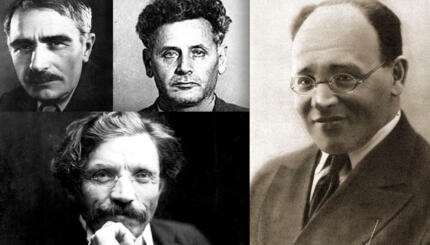Reprinted with permission from American Jewish Fiction: A JPS Guide (Jewish Publication Society).
Cynthia Ozick‘s first collection of stories, The Pagan Rabbi and Other Stories, exemplifies her ability to articulate and explore juicy paradoxes in the fields of art and religion. For example, Ozick views fiction in its essence as contradicting Jewish tradition-because, of course, all art is a form of idolatry. But writing fiction is still her bread and butter. 
This contradiction hovers over Ozick’s story ‘The Pagan Rabbi,” which features Isaac Kornfeld, a
scholar and talmid hakham who reads Byron, Tennyson, and Keats, and then falls in love with a dryad (that is, wood nymph), a spirit out of pagan folklore. Since in Ozick’s view literature and paganism are more or less identical, loyalists of fiction like her, who want to remain Jewish, need some help resolving the contradiction, perhaps along the lines of Kornfeld’s argument that “Holy life subsists even in the stone…Hence in God’s fecundating Creation there is no possibility of Idolatry.” Not that Kornfeld’s ideas lead him anywhere pleasant: he ends up hanging himself from a tree.
That fiction contradicts Jewish tradition is not only philosophy for Ozick, either; her novella Envy; or, Yiddish in America (reprinted as the second piece in the collection) managed to scandalize the real-life Yiddish literarishe velt upon its first appearance in Commentary, in 1969. A tale of two Yiddishists–one, Ostrover, a short story writer who is famous around the world because his work is translated into English; the other, Edelstein, an obscure and bitter poet known only to readers of small literary journals in mameloshen.
Envy is a portrait in miniature, with deliberate and gleeful distortions, of the possibilities of Yiddish in postwar America. The satire did not go unnoticed. Sadly, the extraordinary Yiddish poet, novelist, and critic Jacob Glatstein went to his grave in 1971 assuming that Edelstein was a cruel version of himself, just as Ostrover was obviously modeled on Isaac Bashevis Singer.

Help us keep Jewish knowledge accessible to millions of people around the world.
Your donation to My Jewish Learning fuels endless journeys of Jewish discovery. With your help, My Jewish Learning can continue to provide nonstop opportunities for learning, connection and growth.
This wasn’t the case, Ozick later told an interviewer; “I did not know,” she said, “when I wrote that story-just think of my ignorance that there had been a great fight between Glatstein and Singer,” just like the one in her story. In her defense, Ozick has translated Yiddish poetry by H. Leivick, Abraham Sutzkever, and Glatstein himself, in the hopes of helping these writers reach English-language readers, and Envy can be read, as Ozick has said, as “an elegy, a lamentation, a celebration” of Yiddish in the United States.
Though The Pagan Rabbi and Other Stories is worth owning for the sake of Envy alone, the book also contains “Virility”-a beguiling tale of an immigrant poet, Elia Gatoff, who changes his name to Edmund Gate and owes his fame to an unlikely source of material-and several short weird narratives (“The Butterfly and the Traffic Light” and ‘The Dock Witch,” for example) that beggar summary.
The play of Ozick’s language and the range of her intellect consistently delight, and if she occasionally strays too far in the direction of the highfalutin or the obscure, she does so for the best reasons, because she aspires to create fiction that enlarges our sense of what art and Jewishness can mean.
Further reading
The biographical essay by Susanne KIingenstein that appears in Daughters of Valor (1997) provides fascinating facts about Ozick’s life and its relation to her work. A spate of academic studies of Ozick’s oeuvre appeared in the 1990s, written by scholars such as Elaine Kauvar (1993), Sarah Blacher Cohen (1994), and Victor Strandberg (1994); a collection of essays edited by Harold Bloom (1986) may be the most useful point of entry into the secondary literature about Ozick’s early work.


